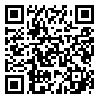1. Imani MN, Abdollahi M, Hemmati M. The relationship between philosophical mindedness of managers with performance of managers. Educational Administration Research. 2012;4(13):57–72. [Persian] [
Article]
2. Yaghoobi A, Mirzasafi A. Investigating the relationship between thinking styles and creativity with entrepreneurial capabilities in graduate students at Bu-Ali Sina University. Journal of Research and Planning in Higher Education. 2017;23(2):133–47. [Persian] [
Article]
3. Herrmann N. The creative brain. Second edition. Lake Lure, NC: Brain Books. 1989.
4. Harris LV, Sadowski MA, Birchman JA. A comparison of learning style models and assessment instruments for university graphics educators. Engineering Design Graphics Journal. 2006;70(1):14–24.
5. Alipour A, Sadeghi Z, Mohammad Beigi A, Mardani Valandani Z, Bagherian-Sararoudi R. Personality and handedness; does the personality of left-handed, right-handed and ambidextrous individuals differ? J Res Behav Sci. 2013;10(7):690–97. [Persian]
6. Chan S, Yuen M. Personal and environmental factors affecting teachers' creativity-fostering practices in Hong Kong. Think Skills Creat. 2014;12:69–77. [
DOI]
7. Hosseini A, Mehdipour Maralani F. Structural Modeling on the relationship between creative education atmosphere, intrinsic motivation and self-regulation strategies in female students of the university of Tehran. Journal of Applied Psychological Research. 2017;8(1):13–29. [Persian] [
Article]
8. Abedi A. Investigation of effectiveness of neuropsychological interventions for improving academic performance of children with mathematics learning disabilities. Advances in Cognitive Sciences. 2011;12(4):13–24. [Persian] [
Article]
9. Gong H, Xin X. Buzz and tranquility, what matters for creativity? a case study of the online games industry in Shanghai. Geoforum. 2019;106:105–14. [
DOI]
10. Kabiri A, Choobdari A. Asar bakhshi amoozesh bazi haye khallagh bar tafakor khallagh va halle masale dar danesh amoozan ba estedad [The effectiveness of teaching creative games on creative thinking and problem solving in gifted students]. In: 7th International Conference on Psychology, Educational Sciences and Lifestyle [Internet]. Tehran; 2019. [Persian]
11. Hamedi O, Moradi S, Sasanian Z, Torabi MA, Arman HR. Mediating role of Nedherman intellectual preferences in the impact of colb learning styles on learning self-regulation in students. Journal of New Educational Approaches. 2020;15(1):102–13. [Persian] [
Article]
12. Laumann TO, Snyder AZ. Brain activity is not only for thinking. Curr Opin Behav Sci. 2021;40:130–6. [
DOI]
13. De Boer A, Steyn T, Du Toit P. A whole brain approach to teaching and learning in higher education. South African Journal of Higher Education. 2001;15(3):185–93. [
DOI]
14. Azizi N, Bolandhematan K, Saedi P. Creativity context and factors in the teaching of creative teachers in Kurdistan rural schools. Journal of Research in Teaching. 2019;7(2):88–114. [Persian] [
Article]
15. Kyprianidou M, Demetriadis S, Pombortsis A, Karatasios G. PEGASUS: designing a system for supporting group activity. Multicultural Education & Technology Journal. 2009;3(1):47–60. [
DOI]
16. Rastgar AA, Malekdar M, Tajaldin M. Measurement and evaluation of the effectiveness amount of education system on brain dominance using Nedherrmann model. Technology of Education Journal. 2012;6(1):19–31. [Persian] [
Article]
17. Boomsma A. The robustness of LISREL against small sample sizes in factor analysis models. Amsterdam: North-Holland Publ; 1982.
18. Chapman LJ, Chapman JP. The measurement of handedness. Brain Cogn. 1987;6(2):175–83. [
DOI]
19. Abedi J. Creativity and new ways of measuring it. Journal Psychological Research. 1993;2(1&2):54–46. [Persian]
20. Sternberg RJ, Wagner RK. MSG Thinking Styles Inventory manual. Unpublished manuscript; 1991.
21. Alipour A, Agah Haris M. Barrasi ghabeliat etemad va etebar porseshname dast bartari Edinburg dar Iran [Investigating the reliability and validity of the Edinburgh hand excellence questionnaire in Iran]. Psychological Sciences. 2006;6(22):197–205. [Persian]
22. Sternberg RJ. Thinking styles: theory and assessment at the interface between intelligence and personality. In: Sternberg RJ, Ruzgis P; editors. Personality and intelligence. Cambridge University Press; 1994.
23. Khosravi Babadi A, Kooshki S, Bagheri E. Study of feasibility, validity, reliability and norm-finding of Sternberg's thinking styles questionnaire on personnel of Gas Company of Khorasan Razavi Province and its relation with job satisfaction. Psychological Research. 2013;4(16):27–55. [Persian] [
Article]
24. Magner N, Welker RB, Campbell TL. Testing a model of cognitive budgetary participation processes in a latent variable structural equations framework. Accounting and Business Research. 1996;27(1):41–50. [
DOI]
25. Henseler J, Sarstedt M. Goodness-of-fit indices for partial least squares path modeling. Comput Stat. 2013;28(2):565–80. [
DOI]
26. Herrmann N. The creative brain. Quebecor Printing Book Group; 1995.
27. Herrmann N. Creativity, learning, and the specialized brain in the context of education for gifted and talented children. Proceedings of Seventh World Conference on Expanding Awareness of Creative Potential Worldwide. Salt Lake City, Utah: Brain Talent-Powers Press; 1990, pp. 86-103.
28. Herrmann N, Herrmann-Nehdi A. The whole brain business book: unlocking the power of whole brain thinking in organizations, teams, and individuals. New York: McGraw Hill Professional; 2015.





